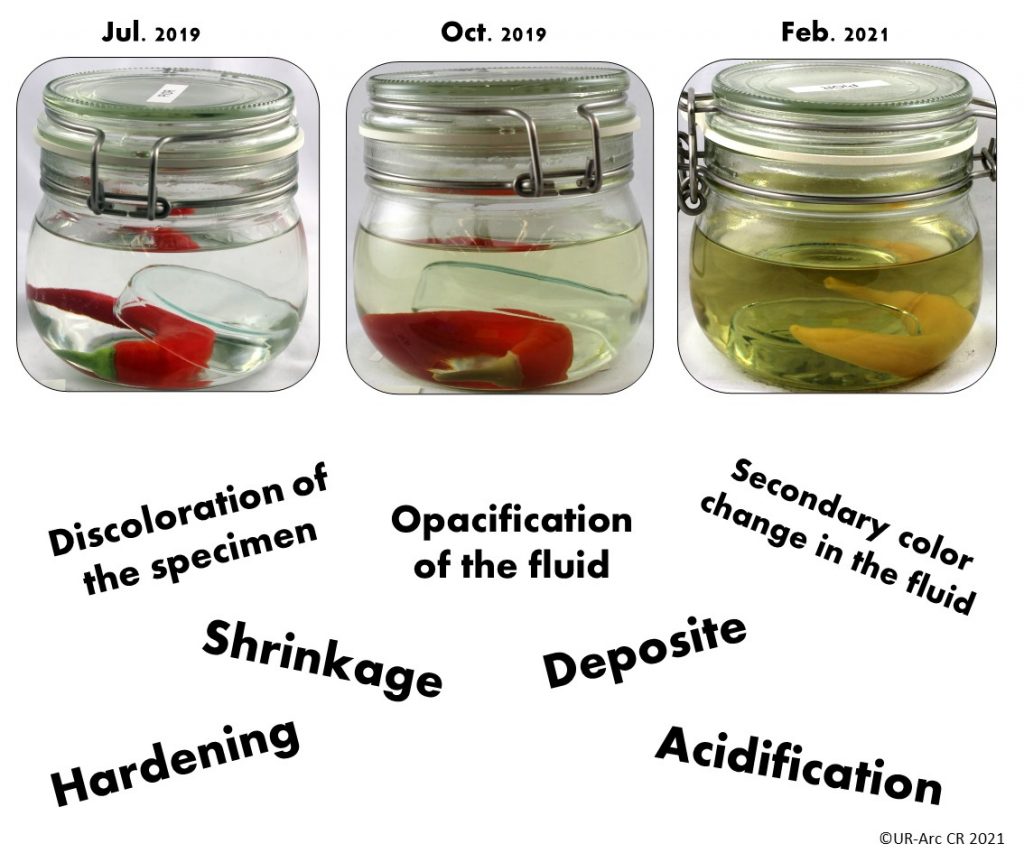Spring 2021: The liquor project is blooming!
june 2021 – EGR
After a long winter, spring finally arrived with its colorful flowers; a great opportunity for us to put some well-known recipes, such as Wagstaffe Flower mixture, Copenhagen mixture, Kew mixture and Kaiserling to the test!
The Flowers
Verbenas and Lobelias a thriving throughout the month of May here in Switzerland. They embellish gardens and balconies with their beautiful red, purple and blue colors, thanks to the flavonoid pigments. Most of them are sensitive to pH variation, causing their color to change. They are contained inside the vacuole, which has a semi-permeable membrane that allows it to hold water as well as retaining other compounds, helping to protect and regulate the chemical balance inside the cell.
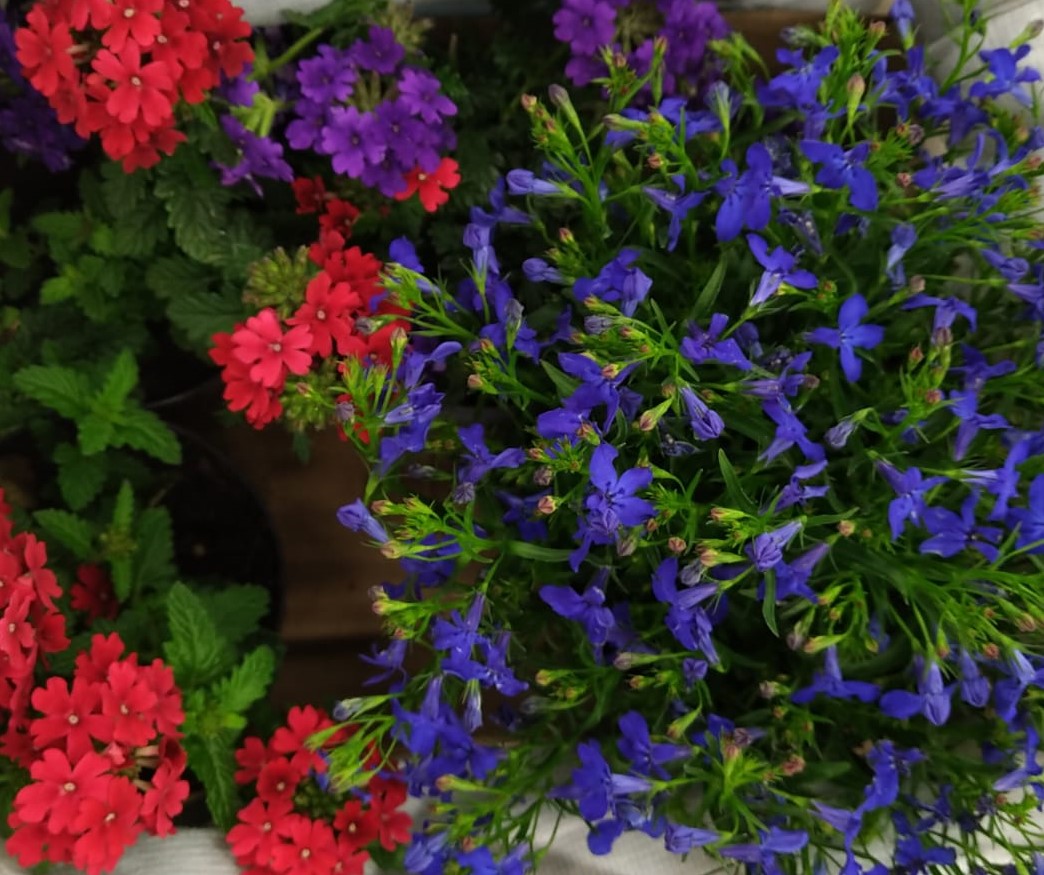
In this new set of tests, we aimed to see what would happen to the pigments of our specimen in different recipes. The color migration inside the fluid was regularly monitored by spectrocolorimetry. A week after the preparation, we looked at the specimens under a microscope to see what happened to a cellular level.
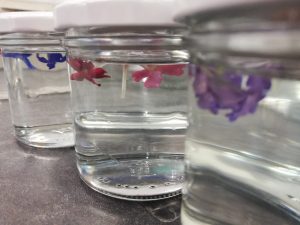
Flowers in fluid
©UR-arc CR 2021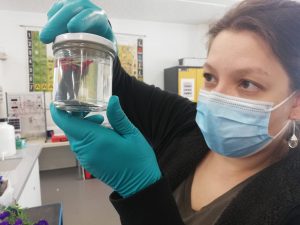
Observing the specimen
©UR-arc CR 2021
Some observations
These tests are still ongoing. Soon, a second batch of jars will be prepared, containing more finely-tuned recipes based on the first observations made on the first batch. Indeed, some historical recipes showed promissing results, but could be imprived in order to specifically preserve pigments.
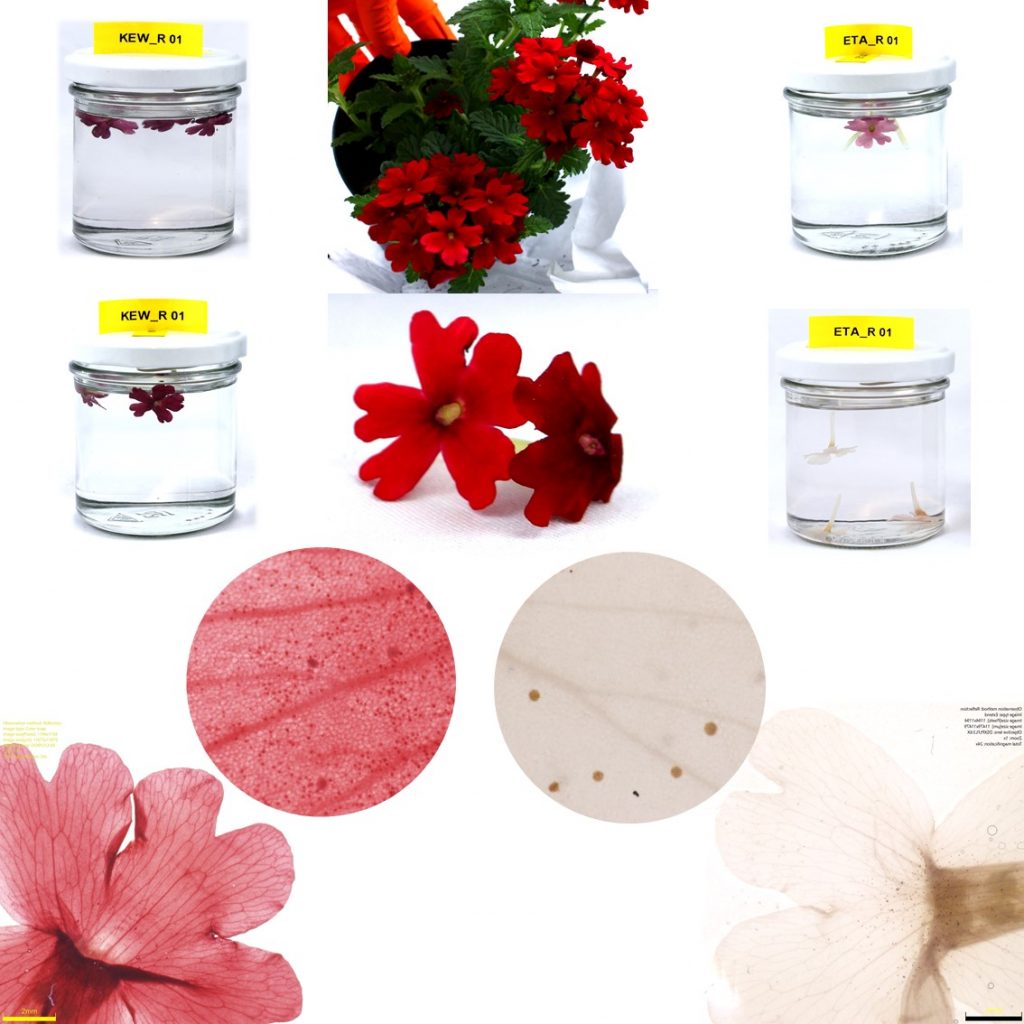
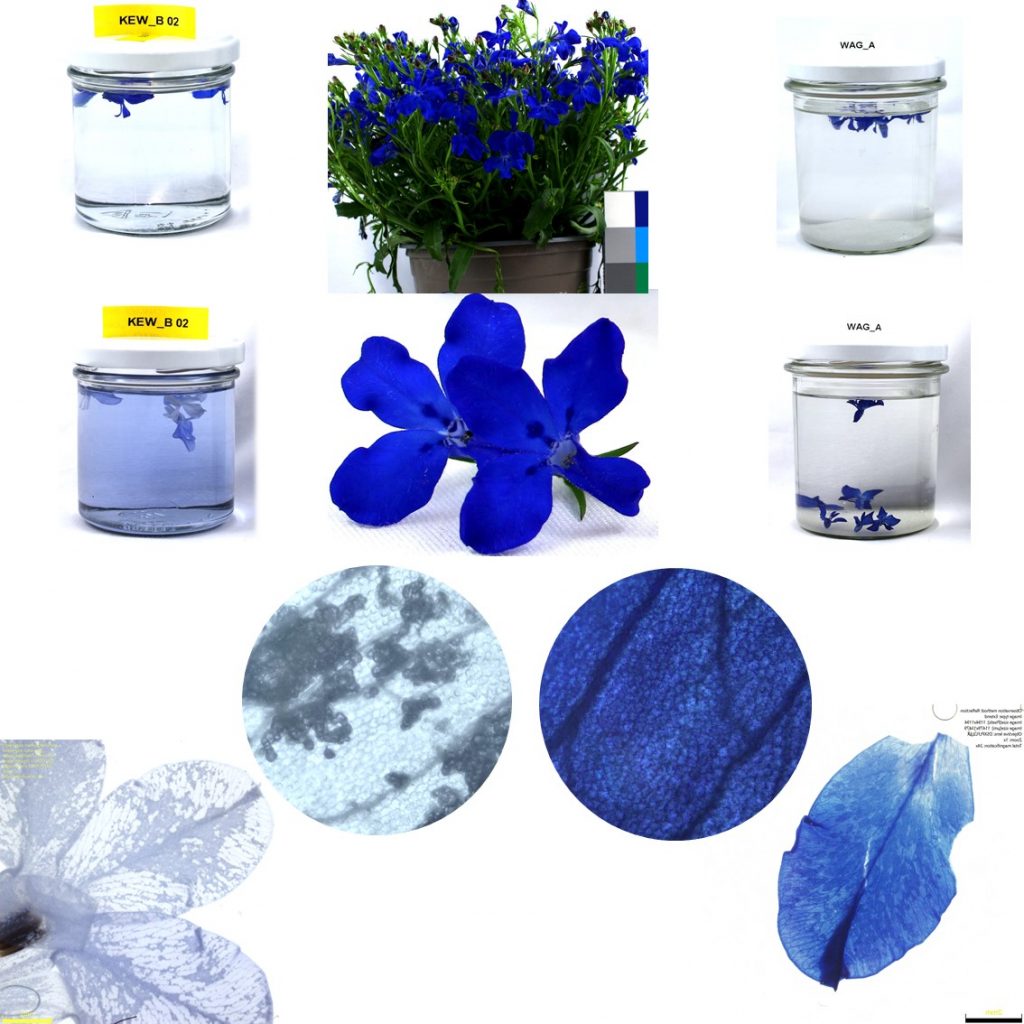
What happened since 2019?
march 2021 – EGR
In 2019, we prepared some samples in fluid reproducing botanical wet collections with the aim of studying the problem of specimens’ discoloration. Since then a lot has happened!
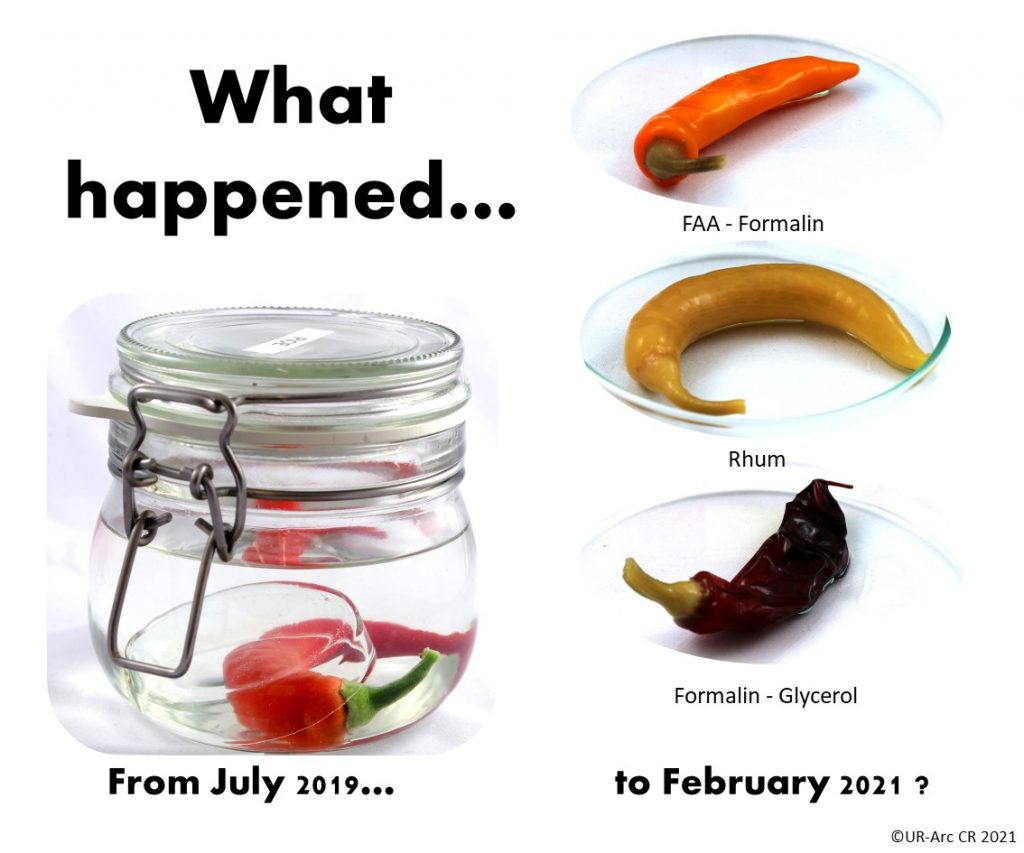
We have been monitoring our samples in jars regularly using imaging, colorimetric and spectroscopic techniques, and are now processing and interpreting those precious data. It apprears that distinct kind of plants reacts differently according to the fixing process and conservation fluid.
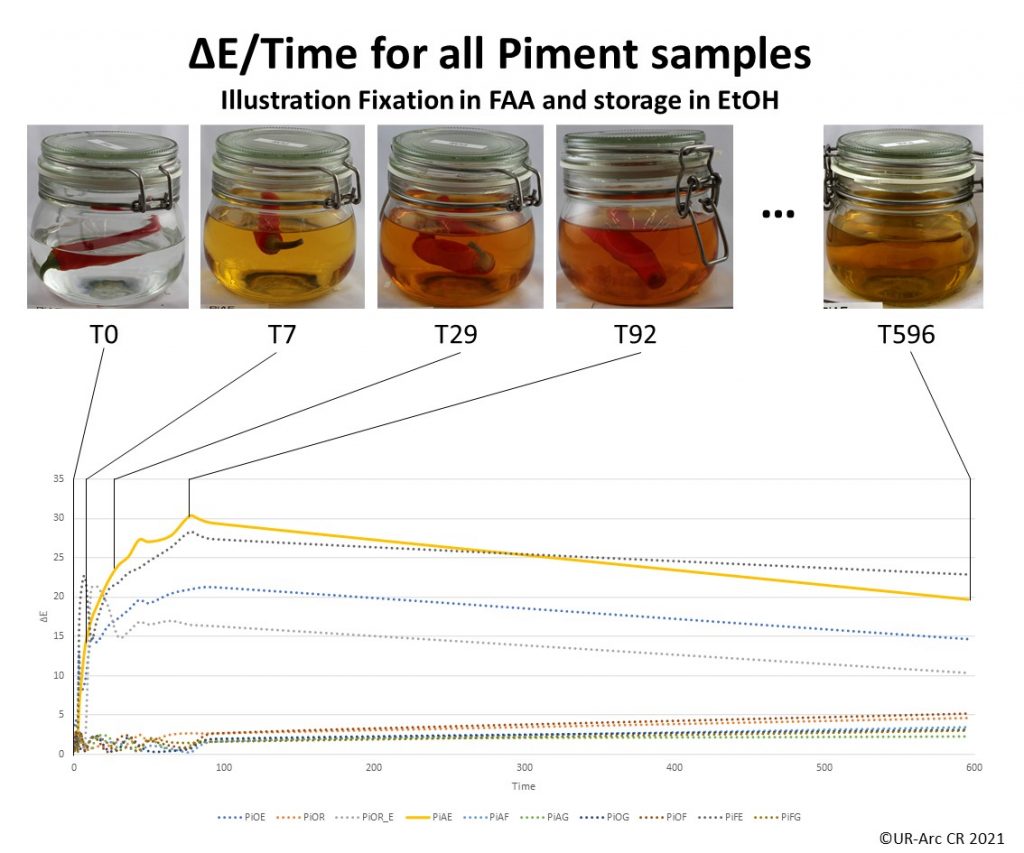
After 3-6 months, it was possible to observe as a general trend a progressive and continuous release of dyes in the liquid, rendering it darker and darker.
After 18 months, we could observe different alterations of the fluid as well as the specimen. Multiple color changes occurred in the fluid. Some fluids kept on getting darker while others began to lighten, suggesting a probable process of dye degradation.
The specimens suffered from divers morphological changes, depending on their preparation: Some experienced hardening, shrinkage, discoloration…
